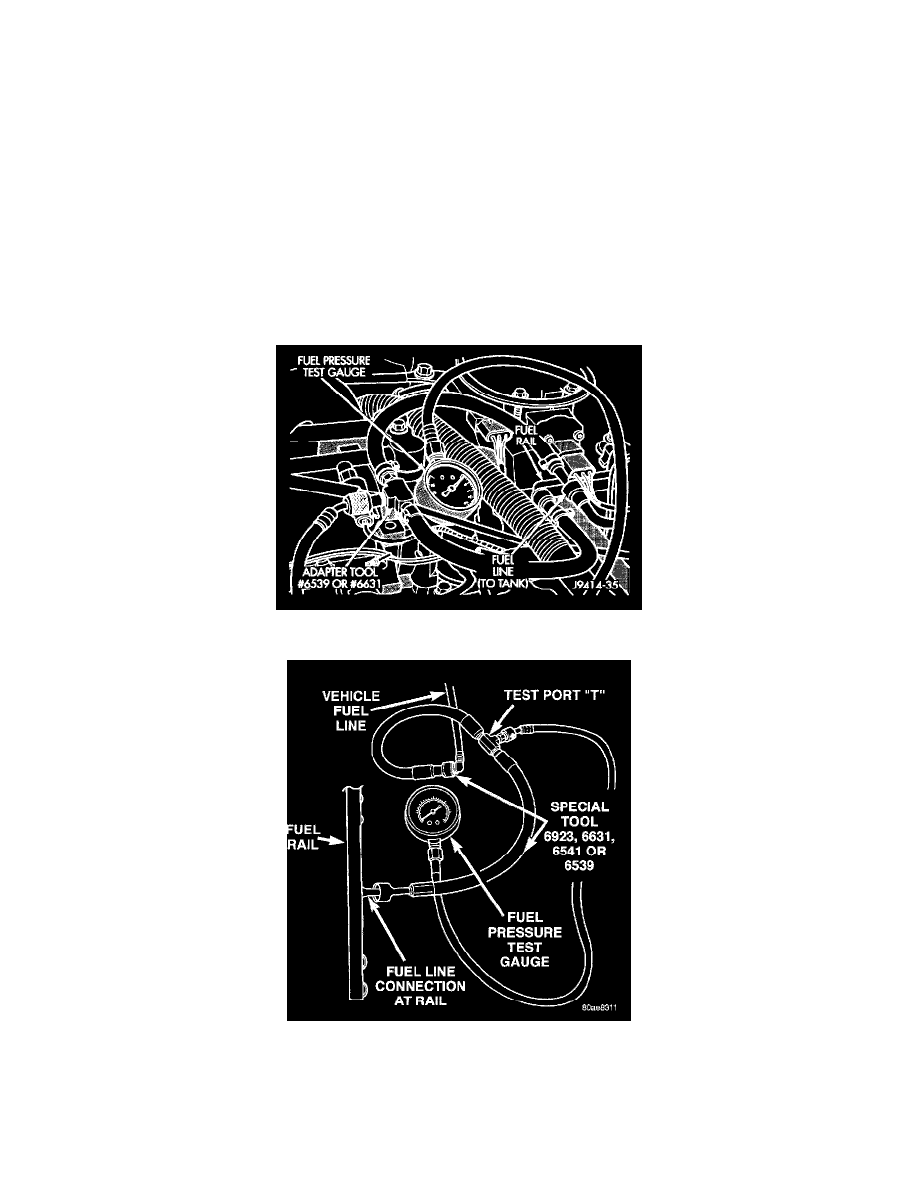Dakota R/T 2WD V8-5.9L VIN Z LDC (1999)

Fuel Pressure: Testing and Inspection
Use this test in conjunction with the Fuel Pump Pressure Test and Fuel Pump Capacity Test.
Check Valve Operation: The electric fuel pump outlet contains a one-way check valve to prevent fuel flow back into the tank and to maintain fuel supply
line pressure (engine warm) when pump is not operational. It is also used to keep the fuel supply line full of gasoline when pump is not operational. After
the vehicle has cooled down, fuel pressure may drop to 0 psi (cold fluid contracts), but liquid gasoline will remain in fuel supply line between the check
valve and fuel injectors. Fuel pressure that has dropped to 0 psi on a cooled down vehicle (engine off) is a normal condition. When the electric fuel
pump is activated, fuel pressure should immediately (1-2 seconds) rise to specification.
Abnormally long periods of cranking to restart a hot engine that has been shut down for a short period of time may be caused by:
-
Fuel pressure bleeding past a fuel injector(s).
-
Fuel pressure bleeding past the check valve in the fuel pump module.
1. Disconnect the fuel inlet line at fuel rail. Refer to Fuel Tubes/Lines/Hoses and Clamps for procedures. On some engines, air cleaner housing
removal may be necessary before fuel line disconnection.
2. Obtain correct Fuel Line Pressure Test Adapter Tool Hose. Tool number 6539 is used for 5/16" fuel lines and tool number 6631 is used for 3/8"
fuel lines.
Connecting Adapter Tool-Typical
Connecting Adapter Tool-Typical
3. Connect correct Fuel Line Pressure Test Adapter Tool Hose between disconnected fuel line and fuel rail.
4. Connect the 0-414 kPa (0-60 psi) fuel pressure test gauge (from Gauge Set 5069) to the test port on the appropriate Adaptor Tool. The fittings on
both tools must be in good condition and free from any small leaks before performing the proceeding test.
5. Start engine and bring to normal operating temperature.
